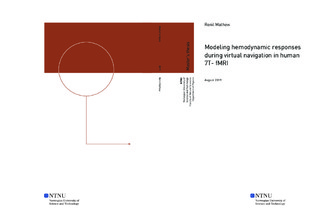| dc.description.abstract | Functional magnetic resonance imaging (fMRI) is one of the most widely used non-invasive neuroimaging technique in humans. fMRI measures neural activity indirectly in the form of the blood-oxygen-level-dependent (BOLD) signal. This signal reflects hemodynamic fluctuations that are induced by neural population activity. Statistical analysis of the acquired data requires comparing the task-derived predictions of the BOLD signal to the one observed during the experiment. Typically, the predicted BOLD signal is modeled by convolving a hemodynamic response function (HRF) with the neural stimulus functions. The HRF shape represents the variation in BOLD signal in response to a neural event. Most fMRI studies assume a pre-defined canonical HRF. However, several earlier studies suggested that the HRF shows strong inter-subject and inter-regional variations that are not captured by the canonical HRF. Slight variations in the modeling of HRF could cause significant deviation from the predicted and observed BOLD signal, affecting the results and complicating subsequent interpretation of the data.
Here, we used 7T-fMRI in combination with virtual reality (VR) to study the shape of the HRF related to virtual navigation behavior. We assess the HRF in 18 participants across cortical and sub-cortical regions during a virtual navigation task. We estimate the HRF as a function of the navigation behavior (translations and rotations) using finite impulse response (FIR) basis sets in multilinear regression analysis. The flexibility of FIR acknowledges the variability of observed BOLD signals, allowing us to estimate the HRF without prior assumption about its shape. We then extracted the peak latency and the amplitude from the HRF of each voxel and compared it across regions involved in visual perception and navigation. We found differences in the HRF parameters across subjects and regions in line with previous work. Our predicted BOLD signal from showed higher correlation to the observed BOLD signal in some regions when compared to the frequently used canonical HRF. | |
